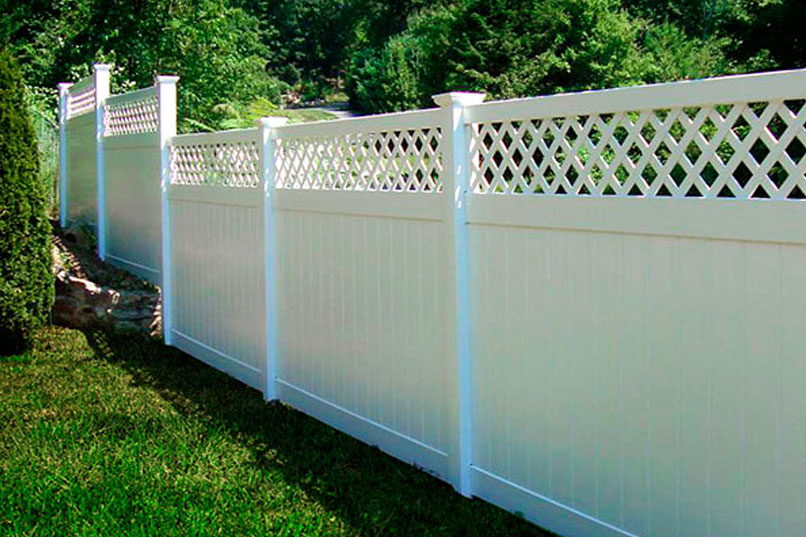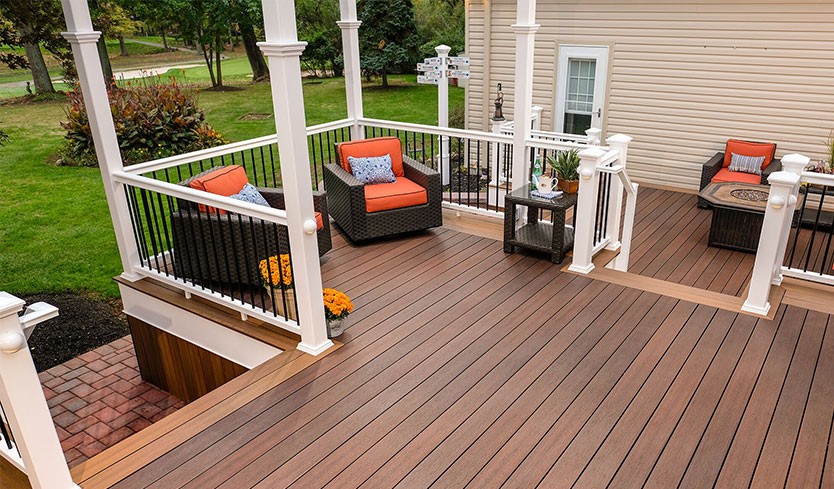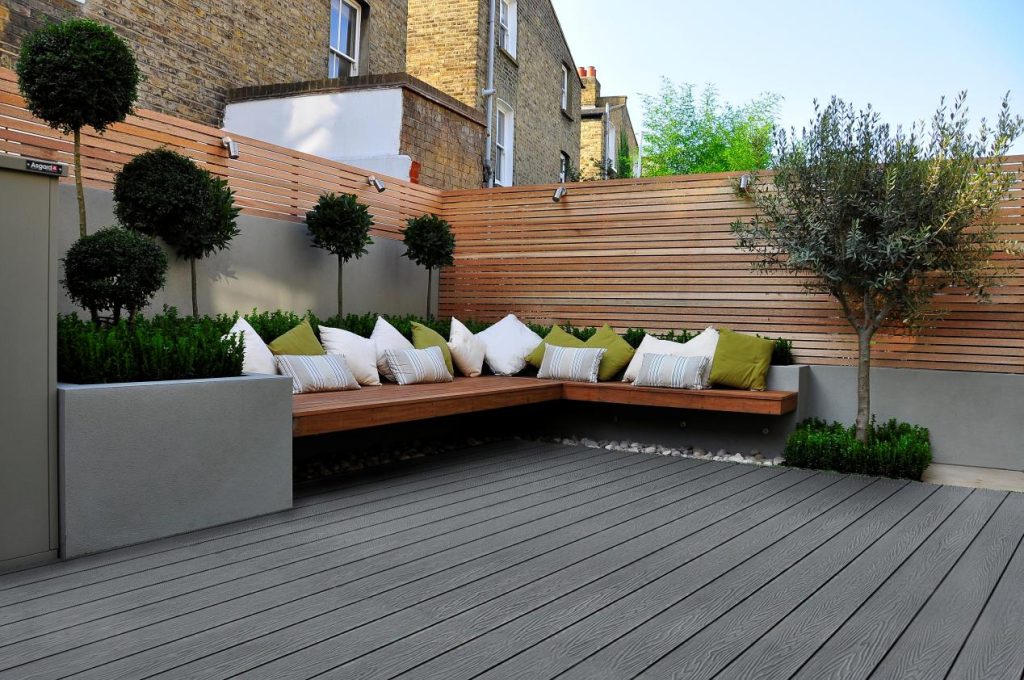If you are planning your outdoor project, understanding the composite fencing cost is essential. Many homeowners and businesses want a durable, low-maintenance fence but are often surprised by the price variations. The cost depends on several factors, including material quality, height, length, installation complexity, and additional features. Knowing these variables in advance helps budget accurately and ensures you get the right fence for your needs. Let’s explore the key factors influencing composite fencing prices.
Table of Contents
Factors That Affect Composite Fencing Cost
1. Material Quality
The primary determinant of composite fencing cost is the material itself. Higher-quality composite panels contain a better blend of recycled wood fibers and plastic, sometimes with protective capping, which increases durability and color retention. Premium boards resist fading, scratching, and moisture damage, making them more expensive than standard boards.
Capped Composite Panels: Usually cost more due to the added protective layer but reduce long-term maintenance costs.
Basic Composite Panels: Less expensive but may fade or scratch faster, requiring occasional touch-ups.
Choosing the right material involves balancing initial cost against long-term durability. Higher-quality composites may have a higher upfront price but can save money over the fence’s lifetime.
2. Fence Height and Length
Fence dimensions directly impact overall cost. Taller fences require more material, heavier posts, and potentially stronger support structures. Likewise, longer fences naturally require more panels and posts.
Standard Heights: 4 to 6 feet are common for residential fencing. Prices increase significantly for 7–8 feet or higher.
Custom Lengths: Continuous long runs of fencing without breaks may require custom panels, adding to the cost.
When calculating composite fencing cost per foot, consider both material and installation costs proportionally. Larger, taller fences increase both aspects, sometimes exponentially if reinforcement is needed.
3. Installation Complexity
Installing composite fencing is more than just placing panels between posts. The complexity of the terrain, ground type, and accessibility can significantly affect installation costs.
Uneven Terrain: Hills, slopes, or rocky ground require additional labor, cutting, and leveling, which increase labor costs.
Urban vs Rural Sites: Delivering and handling heavy composite panels in tight urban spaces may require extra equipment or manpower.
DIY vs Professional Installation: DIY installation reduces labor costs but may extend the timeline, while professional installation ensures precision but increases upfront expense.
The more complicated the installation, the higher the composite fencing cost per foot, making it crucial to plan ahead.
4. Post and Frame Requirements
Composite panels are only as strong as their support. Posts, rails, and frames influence both stability and price.
Material of Posts: Steel posts are more expensive but stronger than standard wood or recycled plastic posts.
Spacing of Posts: Wider spacing requires sturdier panels and additional reinforcement, increasing costs.
Foundation Requirements: Concrete footings may be needed for heavy fences, especially in soft soil or windy areas.
Even small adjustments in post type or spacing can change the overall cost per foot, especially for long fence runs.
5. Style and Panel Design
Composite fencing comes in various styles—solid panels, picket-style, lattice tops, or decorative inserts. The more intricate the design, the higher the cost.
Solid Panels: Standard, cost-effective, and provide full privacy.
Decorative Panels: Lattice, grooved, or multi-color designs increase manufacturing complexity, raising material prices.
Custom Finishes: Staining, embossing, or textured surfaces also add to composite fencing cost.
Design choice is a significant factor; homeowners often pay more for aesthetics while still enjoying low-maintenance benefits.
6. Additional Features and Accessories
Adding features to your fence can affect cost per foot:
Gates: Single or double gates add both material and hardware expenses.
Lighting: Integrated solar or electrical lights raise installation costs.
Caps and Trim: Decorative post caps, trim boards, and coping add a premium to total expenditure.
Even seemingly small upgrades can increase composite fencing cost, but they also improve functionality and visual appeal.
7. Local Market and Labor Rates
Prices vary by region due to differences in labor rates, shipping, and material availability. Urban areas with higher labor costs or limited access may see composite fencing cost per foot rise by 20–30% compared to rural areas.
Material Shipping Costs: Heavy composite panels may incur high transportation fees, especially for remote locations.
Labor Rates: Experienced installers may charge more, but quality installation ensures longevity and avoids costly repairs.
Always consider local market conditions when budgeting for a composite fence.
8. Seasonal and Supplier Factors
Timing and supplier selection can also influence cost:
Off-Season Discounts: Some suppliers offer lower prices in winter or slower construction periods.
Bulk Orders: Large projects may benefit from reduced per-foot prices due to volume discounts.
Supplier Reputation: Premium brands typically charge more for quality assurance, warranty, and design options.
Planning purchases strategically can reduce composite fencing cost without compromising on quality.
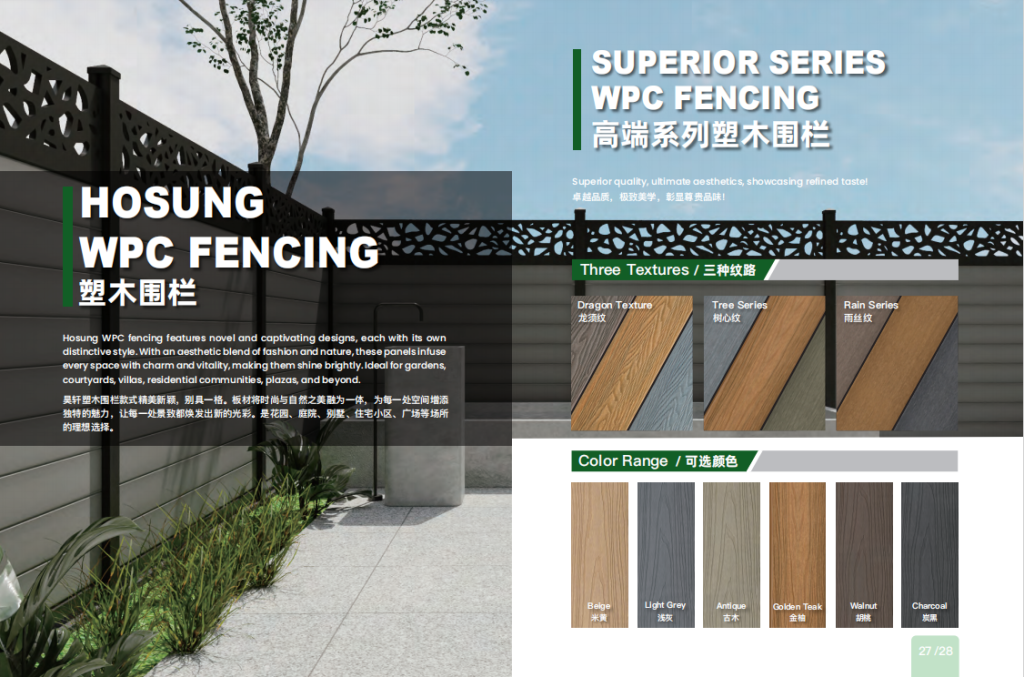
Calculating Composite Fencing Cost per Foot
To estimate composite fencing cost per foot, consider the following:
Material Cost: Price of panels, posts, rails, and accessories divided by total fence length.
Installation Cost: Labor, excavation, and foundation work divided by fence length.
Additional Features: Gates, lighting, or decorative finishes factored into total expense.
For example:
Material: $40 per linear foot
Installation: $20 per linear foot
Gates & Accessories: $5 per linear foot
Total Cost per Foot = $65
This example demonstrates how cost accumulates, highlighting why understanding all influencing factors is critical for budgeting.
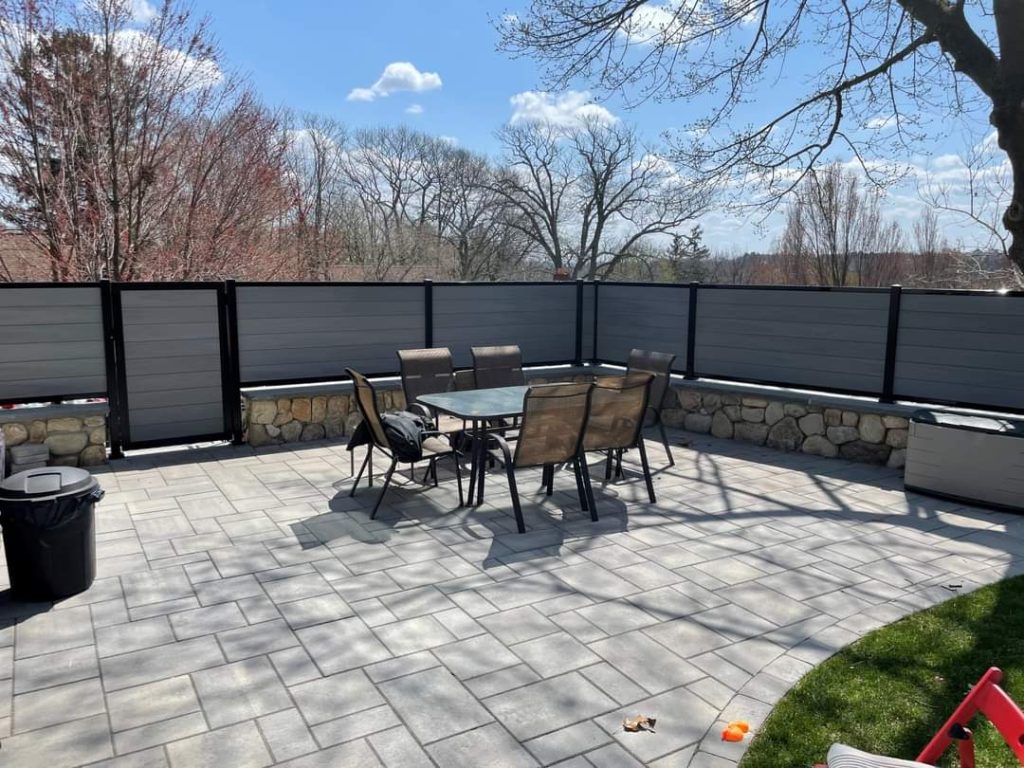
Cost Ranges and Budgeting
When planning a composite fence, understanding the cost per foot helps you set a realistic budget. Prices vary widely depending on material quality, panel design, post type, and additional features. Below is a more detailed breakdown:
| Price Range | Material & Design | Posts & Supports | Features Included | Typical Use Cases |
|---|---|---|---|---|
| Low-End: $25–$40 per foot | Basic composite panels, standard texture and color | Standard recycled plastic or timber posts | Minimal accessories, no decorative features | Budget-conscious residential projects, small garden fences, short privacy sections |
| Mid-Range: $40–$60 per foot | Higher-quality composite panels with better finish, capped surfaces, improved UV resistance | Steel-reinforced or premium wood posts | Some decorative elements such as lattice tops or patterned grooves | Standard backyard fencing, pool surrounds, medium-sized commercial areas |
| High-End: $60–$100+ per foot | Premium panels with full protective capping, embossed textures, and color-stable finishes | Heavy-duty steel or reinforced posts | Decorative trim, post caps, integrated gates, optional lighting | Luxury residential properties, resorts, high-traffic commercial installations, custom-designed fences |
Additional Considerations:
Installation Complexity: Sloped or rocky terrain may increase labor costs by 15–30%, impacting total per-foot cost.
Length of Fence: Long continuous runs can sometimes lower cost per foot due to bulk purchasing, while short sections may increase the price.
Local Market Factors: Urban areas with high labor costs or limited access may have higher total per-foot pricing.
Customization: Adding gates, lighting, or bespoke designs increases cost beyond standard ranges.
By planning carefully, you can choose a price range that fits your budget while still ensuring durability, aesthetic appeal, and low maintenance. Mid-range panels often provide the best balance of quality and cost for most homeowners, while high-end panels are ideal for those seeking a premium, long-lasting installation.
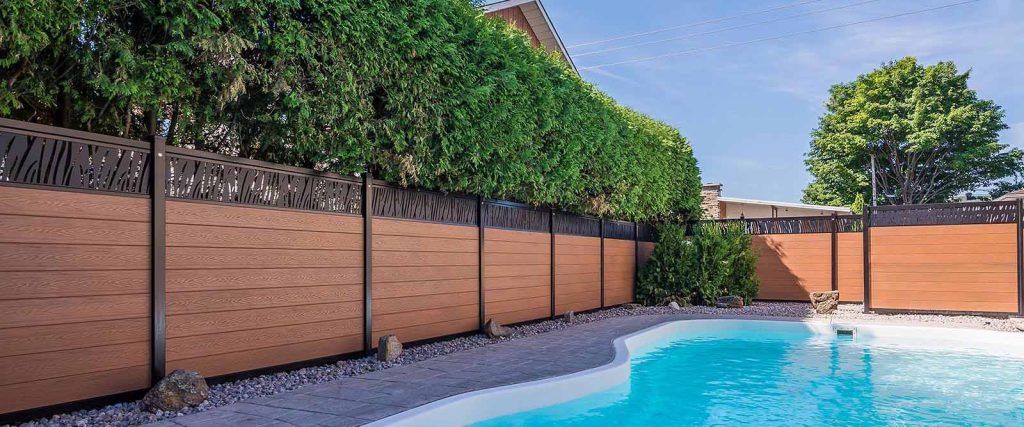
Tips to Manage Composite Fencing Costs
Compare Multiple Quotes: Different suppliers and installers may offer significant price differences.
Choose Standard Sizes When Possible: Custom dimensions increase material and labor costs.
Plan Layout Carefully: Reduce unnecessary cuts and waste by planning panel and post placement.
Consider DIY Installation for Small Projects: Saving on labor can significantly lower total cost.
Buy in Bulk: Large projects may reduce per-foot costs due to volume discounts.
Smart planning can help balance aesthetics, durability, and cost efficiency.
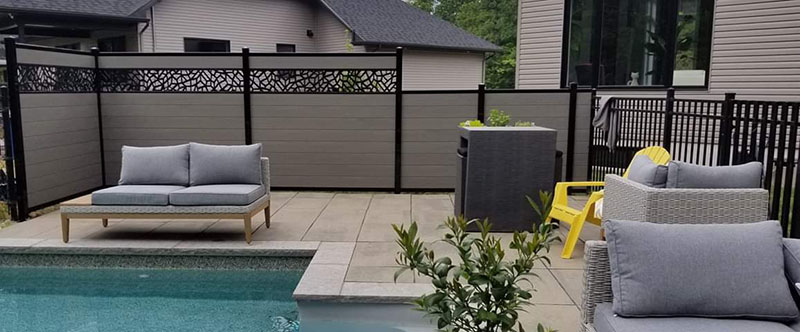
Long-Term Value of Composite Fencing
While composite fencing cost is higher than traditional timber initially, it often proves cost-effective over time:
Low Maintenance: No annual painting, staining, or sealing required.
Durability: Resistant to rot, pests, and extreme weather, reducing replacement costs.
Aesthetic Retention: Color and finish remain consistent, avoiding frequent touch-ups.
Investing in quality composite fencing can save both money and time in the long term, making higher upfront costs worthwhile.
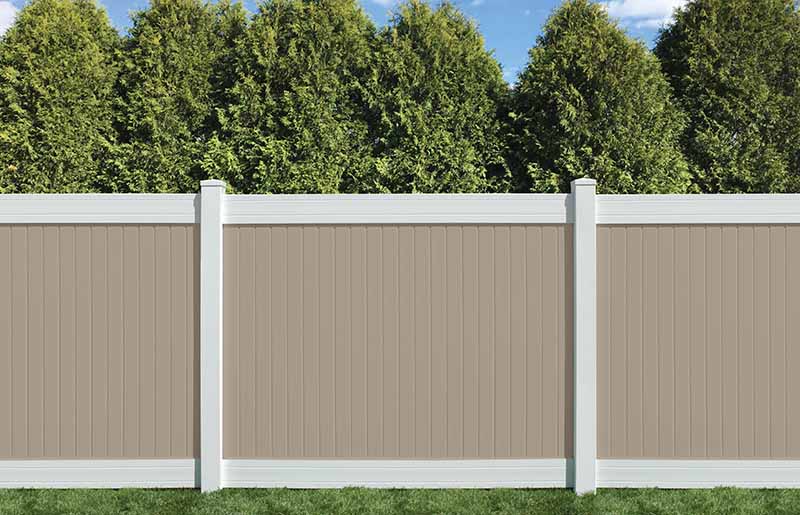
Final Thoughts
Understanding composite fencing cost requires analyzing multiple variables: material quality, fence dimensions, installation complexity, design features, and local market conditions. By considering these factors, homeowners and businesses can budget accurately, choose the right materials, and achieve a durable, attractive, and low-maintenance fence.
Focusing on both upfront cost and long-term value ensures you get the most out of your investment, creating a fence that looks great and performs reliably for decades. Want to get price of these composite fencing? Welcome to contact Hosung!

